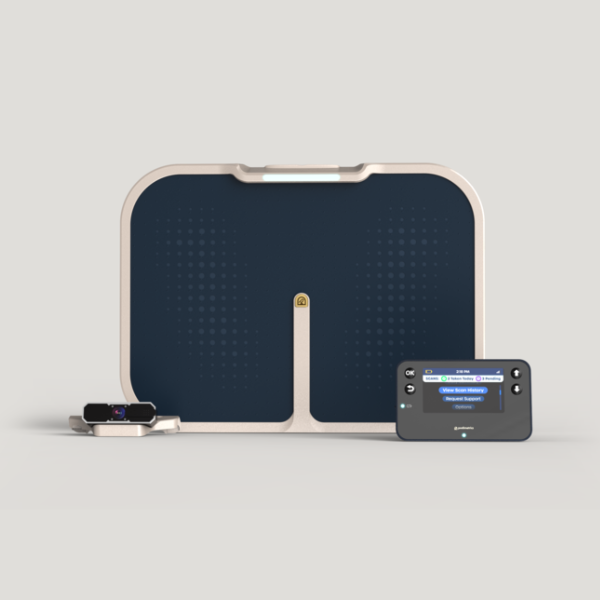Diabetic foot blisters are a common foot problem among individuals with diabetes. These blisters are fluid-filled sacs that develop on the feet and can be painful and uncomfortable. Poor circulation, neuropathy, infections, and high blood sugar levels, among other factors related to diabetes, can cause them.
These blisters require prompt attention and treatment to prevent further complications. Here, we’ll define what they are and the importance of early detection and treatment. We will also cover the causes, symptoms, and treatment, as well as ways to prevent them.
Understanding these crucial aspects can help individuals with complex diabetes. It can help empower them to take proactive steps to maintain their foot health and prevent severe complications.
Causes of Diabetic Foot Blisters
Various factors can cause diabetic foot blisters. But below are the most common ones:
High blood sugar levels: Consistently high blood sugar levels can damage the nerves in the feet and cause neuropathy. That can lead to the development of blisters.
Neuropathy: Diabetic neuropathy is a common complication of diabetes that can cause loss of sensation or tingling in the feet. This can make it difficult to detect pressure or friction on the feet, leading to the development of blisters.
Poor circulation: Diabetes can also cause poor blood circulation, which can lead to a decreased ability to heal and a greater risk of infections.
Infection: In some cases, blisters can form due to infections in the feet. This happens particularly if the skin has been broken or damaged by neuropathy or poor circulation.
Understanding the underlying causes is crucial in preventing their development and seeking timely medical attention when needed.
Symptoms and Appearance
Diabetic foot blisters can vary in size, shape, and location on the foot. Here are some common symptoms and appearance of them.
Location on the foot: Blisters usually develop on the soles of the feet, the heels, or between the toes.
Size and shape of blisters: The size and shape of diabetic foot blisters can vary. They can range from small, round blisters to larger, irregular-shaped blisters. In some cases, blisters may join together to form a larger blister.
Color of blisters: Diabetic foot blisters can appear clear or filled with fluid, or they can appear reddish or discolored.
It’s worth noting that not all blisters on diabetic feet are painful. Nonetheless, it’s crucial to keep an eye on their appearance. Promptly seek medical care if any signs of infection appear, such as redness, swelling, or pus.
Prevention of Diabetic Foot Blisters
Preventive measures are key when it comes to diabetic foot blisters. The best way to treat diabetic foot blisters is to prevent their development. We can achieve this by taking the following measures:
- Monitoring blood sugar levels: Keeping blood sugar levels under control can help prevent diabetic foot complications. Consistently high blood sugar levels can lead to nerve damage and poor circulation, which can increase the risk of blisters.
- Proper foot care: Take care of your feet every day by washing and drying them well to avoid bacteria and infections. Patients living with diabetes should also avoid walking barefoot, keep their toenails trimmed, and use moisturizing creams to prevent dry skin. They should also inspect their feet daily for any signs of blisters, cuts, or sores.
- Wearing appropriate footwear: Wearing comfortable, well-fitting shoes can prevent friction and pressure on the feet, which can lead to blisters. Patients should also choose shoes that are breathable and provide adequate support. They should avoid shoes that are too tight or too loose, as well as shoes with pointed toes or high heels.
- Early intervention: If a blister does develop, it’s important to seek prompt medical attention. Treating the blister early can prevent it from becoming infected or developing into a more serious complication.
By following these preventive measures, diabetic patients can reduce their risk of developing foot blisters and other foot complications. It’s important to discuss foot care with a healthcare provider and to seek medical attention for any foot issues.
Treatment of Diabetic Foot Blisters
Early detection and prompt treatment are crucial in treating diabetic foot blisters. Here are the treatment options available for diabetic foot blisters:
Self-care measures
To self-treat a foot blister, patients can try these steps:- Cleaning and dressing the blister: Cleaning the blister with mild soap and water and applying a sterile dressing can prevent infection.
- Resting the affected foot: Resting the affected foot can reduce pressure on the blister and promote healing.
- Applying a protective covering: For example, use a cushioned protective covering. A moleskin pad can prevent further irritation and friction on the blister.
Medical treatment
If a diabetic foot blister becomes infected or does not heal, medical treatment may be necessary. This can include:- Antibiotics: If there is an infection, antibiotics can be a recommended course of treatment to halt its spread.
- Drainage of the blister: In some cases, a healthcare provider may need to drain the blister. This helps relieve pressure and promote healing.
- Debridement of dead tissue: If the blister has an infection or contains dead tissue, a healthcare provider may need to remove it to prevent additional complications.
In summary, diabetic foot blisters require immediate attention and treatment to avert severe complications. To keep feet healthy and avoid blisters, patients should take precautions, care for themselves, and see a doctor if necessary.
Complications
If left untreated, diabetic foot blisters can lead to serious complications. Diabetic foot blisters carry a range of potential complications that can cause serious harm. Those include:
Infection: Patients living with diabetes are more susceptible to infections due to their weakened immune systems. If a blister becomes infected, it can spread to the surrounding tissue and bone, leading to a serious infection.
Ulcers: If a diabetic foot blister is not treated promptly, it can break open and form an ulcer. Ulcers can be difficult to heal and can lead to further complications.
Cellulitis: Cellulitis is a bacterial infection of the skin and underlying tissue. If a diabetic foot blister becomes infected and is left untreated, it can lead to cellulitis.
Gangrene: In severe cases, untreated diabetic foot blisters can lead to gangrene. Gangrene occurs when the tissue dies due to lack of blood supply. In some cases, amputation may be necessary to prevent the spread of gangrene.
It’s important to seek prompt medical attention if any signs of infection or complications arise. Patients should also monitor their feet daily and seek medical attention if they notice any changes in the appearance of their feet.
Conclusion
In conclusion, diabetic foot blisters are troubling complications for patients. Foot blisters can be caused by high blood sugar levels, neuropathy, and poor circulation, and infections. Therefore, immediate and appropriate attention is needed to avoid subsequent infections, ulcers, cellulitis, and gangrene.
Regular foot care, blood sugar control, appropriate footwear, and early intervention are crucial in reducing the risk of diabetic foot blisters. Those living with diabetes should monitor their feet daily for any changes.
Consult with your healthcare provider to determine the most effective ways to care for your feet and manage your diabetes.





